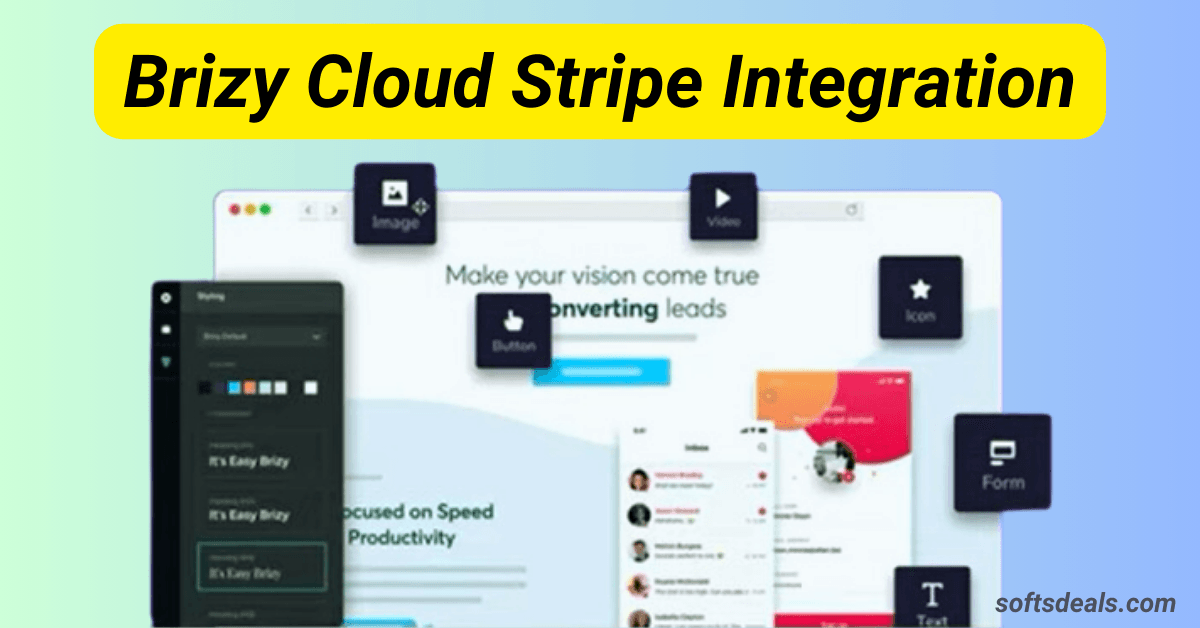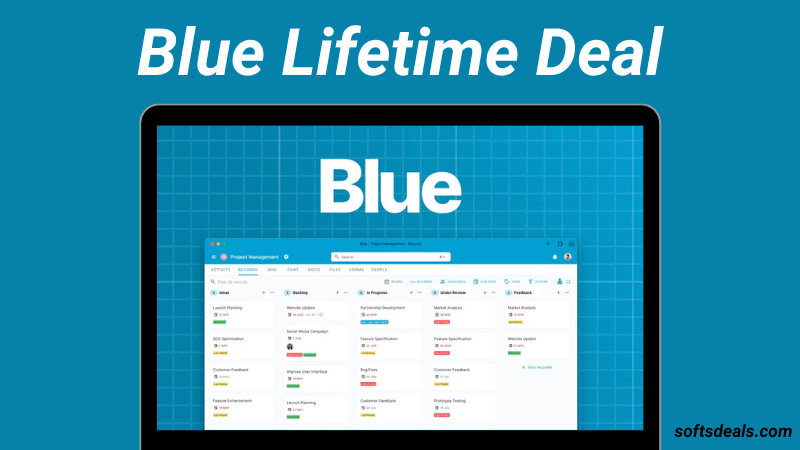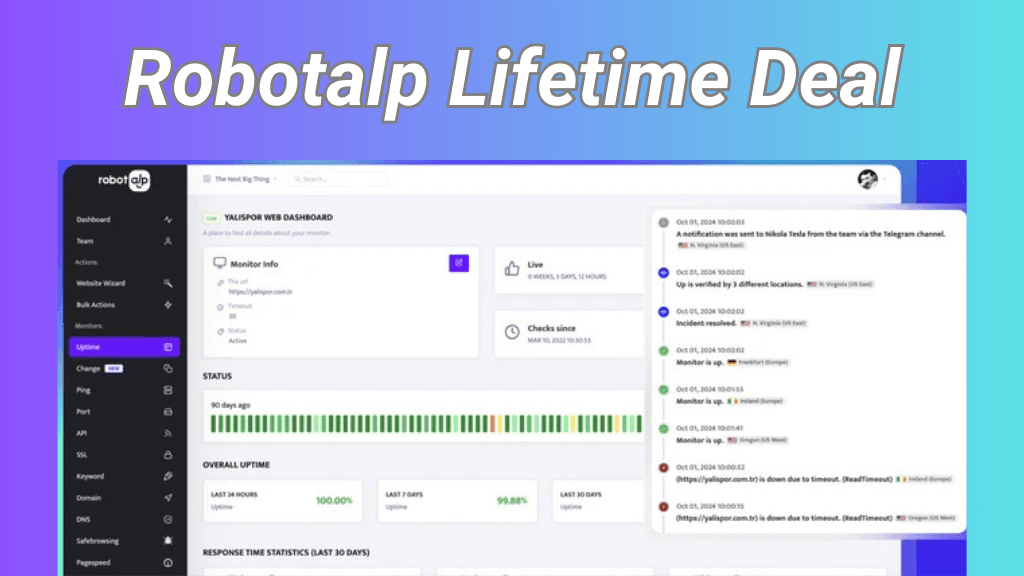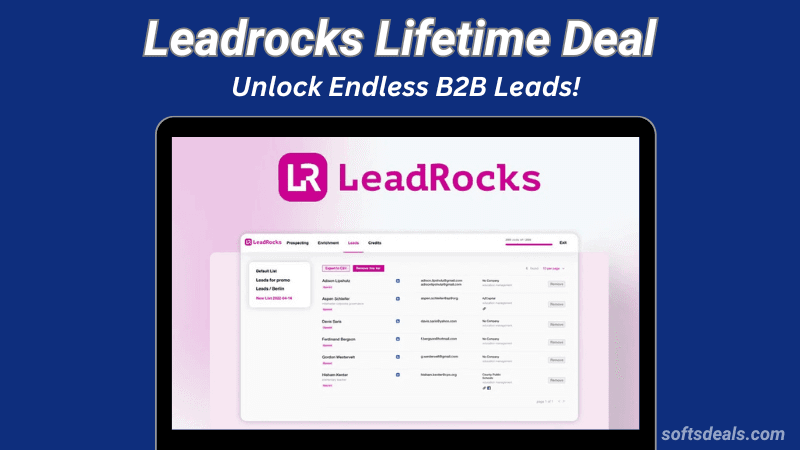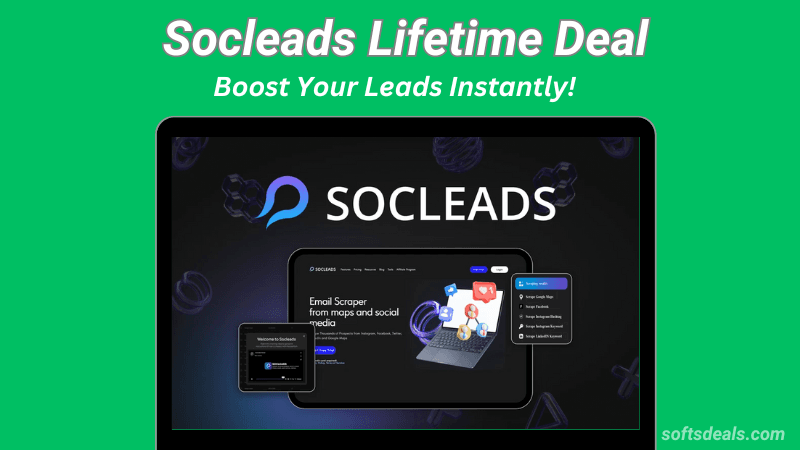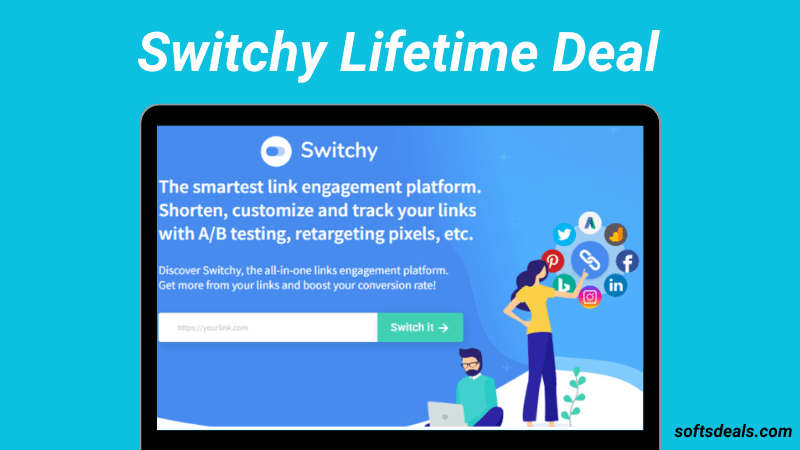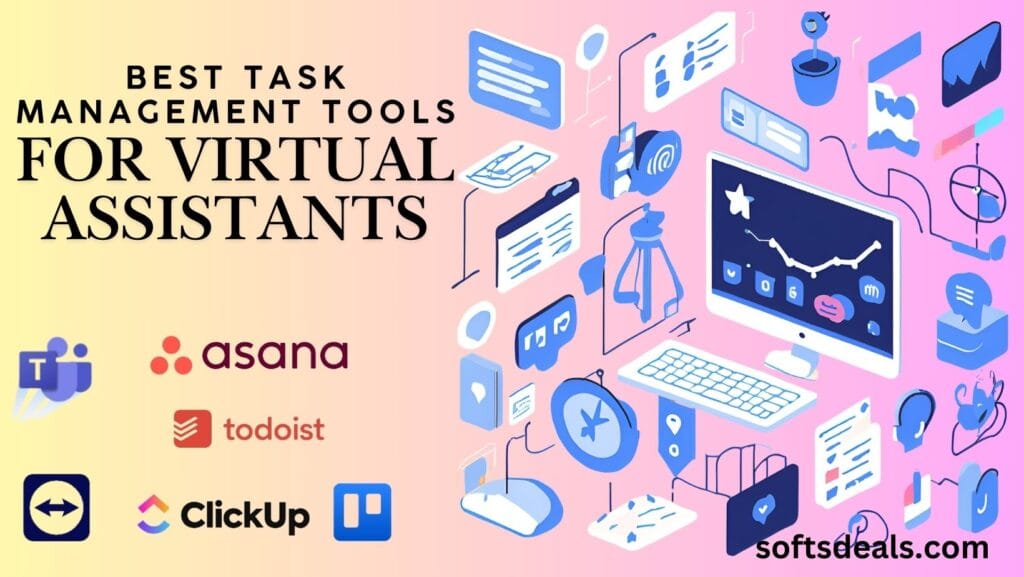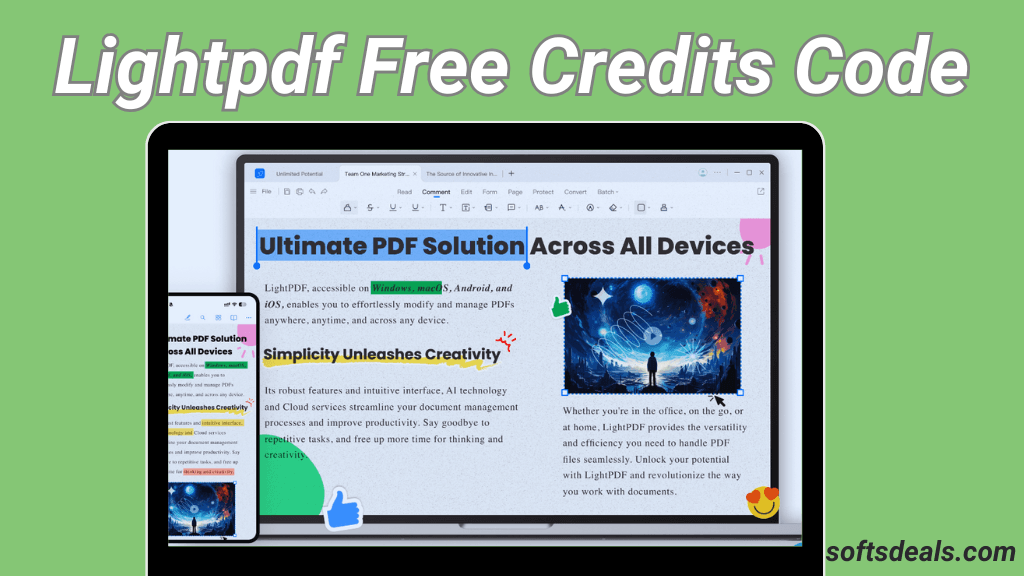Finding the best email platform for personal use can be tricky. With many options available, how do you decide which one suits you best?
Email remains a primary mode of communication in our daily lives. Whether you want to stay in touch with family, manage personal projects, or keep track of important events, the right email platform is essential. But not all platforms are created equal.
Some offer advanced features, while others focus on simplicity and ease of use. Choosing the best one depends on your needs and preferences. In this post, we’ll explore the top email platforms for personal use, helping you find the perfect fit for your daily email activities. Stay tuned as we dive into the details, making your decision easier and more informed.
Top Email Platforms
Choosing the best email platform for personal use can be overwhelming. With so many options available, it’s important to find one that suits your needs. Here, we discuss the top email platforms you should consider: Gmail, Outlook, and Yahoo Mail. Each has its unique features, making them popular choices for personal email management.
Gmail
Gmail is one of the most popular email platforms worldwide. It offers a user-friendly interface and integrates well with other Google services. Here are some key features:
- Storage: Gmail provides 15 GB of free storage, which is shared across Google Drive and Google Photos.
- Security: It offers robust security features, including two-factor authentication and advanced spam filtering.
- Integration: Easily integrates with Google Calendar, Google Docs, and other Google services.
- Search Functionality: Powerful search options make it easy to find emails quickly.
Gmail also supports various customization options. Users can choose from different themes, add labels to emails, and use filters to manage their inbox. This makes it easier to keep everything organized.
The platform also includes a feature called “Smart Compose” which helps in drafting emails faster. It suggests phrases as you type, saving time and reducing errors. For those who manage multiple email accounts, Gmail supports adding other email addresses, allowing users to check and send emails from a single interface.
Outlook
Outlook, offered by Microsoft, is another excellent choice for personal email use. It is known for its professional features and seamless integration with Microsoft Office tools. Key features include:
- Storage: Outlook provides 15 GB of free email storage.
- Calendar Integration: Includes a built-in calendar for scheduling and reminders.
- Security: Offers robust security features, including encryption and phishing protection.
- Focused Inbox: This feature sorts important emails into a separate inbox, making it easier to manage.
Outlook’s interface is clean and intuitive. It allows easy navigation between email, calendar, contacts, and tasks. This integration is particularly useful for users who need to manage their schedules alongside their emails.
For those who use Microsoft Office applications, Outlook’s integration is seamless. You can easily attach files from OneDrive, and access emails offline. Additionally, Outlook offers a mobile app, ensuring you stay connected on the go. The app syncs automatically, so any changes made on one device reflect across all your devices.
Yahoo Mail
Yahoo Mail is known for its simplicity and reliability. It is a great option for personal use, offering a range of features that cater to everyday email needs. Key features include:
- Storage: Yahoo Mail offers a generous 1 TB of free storage.
- Customization: Users can personalize their inbox with different themes and layouts.
- Security: Includes spam filtering and account recovery options.
- Disposable Email Addresses: Allows users to create temporary email addresses for specific purposes.
Yahoo Mail’s interface is user-friendly, making it easy for users of all ages to navigate. The platform also includes a “Yahoo Today” feature, which provides news, weather, and other updates directly in the inbox.
For users who receive a lot of promotional emails, Yahoo Mail offers an “Unsubscribe” feature. This makes it easy to manage subscriptions and keep the inbox clutter-free. Additionally, the Yahoo Mail app offers mobile access, allowing users to check their emails from anywhere. The app also supports push notifications, ensuring you never miss an important email.

Key Features To Look For
Choosing the best email platform for personal use can be challenging with so many options available. To make the right choice, it’s important to understand the key features that matter the most. Let’s explore these features in detail to help you find the ideal email platform for your needs.
Storage Space
Storage space is a crucial feature to consider. It determines how many emails, attachments, and files you can store in your account. Most email platforms offer different storage capacities. Here are some points to keep in mind:
- Free Storage: Many email services provide a certain amount of free storage. For example, Gmail offers 15GB of free storage, which is shared across Gmail, Google Drive, and Google Photos.
- Upgrade Options: Look for email providers that offer easy upgrade options. Paid plans can provide more storage, which is useful if you receive a lot of emails or large attachments.
- Storage Management: Some platforms offer tools to manage your storage. These tools can help you delete old emails, clear out spam, and remove large attachments, ensuring you always have enough space.
Here’s a quick comparison table for popular email platforms and their storage options:
| Email Platform | Free Storage | Paid Plans |
|---|---|---|
| Gmail | 15GB | 100GB for $1.99/month |
| Yahoo Mail | 1TB | Ad-free for $3.49/month |
| Outlook | 15GB | 50GB for $69.99/year |
User Interface
The user interface (UI) plays a significant role in your email experience. A clean, intuitive interface can make managing your emails easier. Here are some factors to consider:
- Ease of Use: The interface should be easy to navigate. Look for platforms with a simple layout, clear labels, and accessible menus.
- Customization: Some email platforms allow you to customize the interface. This can include changing themes, adjusting the layout, and organizing folders and labels to suit your preferences.
- Advanced Features: Features like drag-and-drop, email previews, and quick actions can enhance usability. These features make it easier to manage and organize your emails efficiently.
Here’s a comparison of user interfaces in popular email platforms:
| Email Platform | User Interface Features |
|---|---|
| Gmail | Clean, customizable, advanced search |
| Yahoo Mail | Modern, customizable themes, vibrant layout |
| Outlook | Professional, integrates with Office apps, focus mode |
Mobile Access
In today’s fast-paced world, mobile access to your email is essential. Most email platforms offer mobile apps to help you stay connected on the go. Consider these points:
- Availability: Ensure the email platform provides mobile apps for both iOS and Android devices.
- Synchronization: The mobile app should sync seamlessly with the web version. This ensures you have access to all your emails, contacts, and settings across devices.
- Functionality: The mobile app should offer the same core features as the web version. This includes composing emails, managing folders, and accessing attachments.
Here’s a look at the mobile access features of popular email platforms:
| Email Platform | Mobile App Features |
|---|---|
| Gmail | Available on iOS and Android, real-time sync, offline access |
| Yahoo Mail | Available on iOS and Android, customizable notifications, quick actions |
| Outlook | Available on iOS and Android, integrates with calendar, focused inbox |
Privacy And Security
Choosing the best email platform for personal use involves many considerations. One of the most critical aspects is privacy and security. In today’s digital world, keeping your personal information safe is paramount. Let’s explore some essential security features that can help protect your email account.
Encryption
Encryption plays a vital role in email security. It ensures that only the intended recipient can read the message. Here are some key points about email encryption:
- End-to-End Encryption: This type of encryption ensures that your message is encrypted on your device and only decrypted on the recipient’s device. No one else, not even the email service provider, can read the content.
- Transport Layer Security (TLS): TLS protects your email in transit. It encrypts the connection between your device and the email server, preventing eavesdropping.
Some popular email platforms that offer strong encryption include:
| Email Platform | Encryption Type |
|---|---|
| ProtonMail | End-to-End Encryption |
| Gmail | TLS |
| Tutanota | End-to-End Encryption |
Choosing an email platform with robust encryption helps safeguard your personal messages from unauthorized access.
Spam Filters
Spam filters are crucial for keeping your inbox clean and secure. They protect you from unwanted and potentially harmful emails. Here are some features of effective spam filters:
- Machine Learning: Advanced spam filters use machine learning to identify spam patterns. They adapt over time, improving their accuracy.
- Phishing Detection: These filters recognize and block phishing attempts that try to trick you into revealing personal information.
- Blacklists and Whitelists: You can customize spam filters by adding specific email addresses to blacklists (always blocked) or whitelists (always allowed).
Popular email platforms with strong spam filters include:
| Email Platform | Spam Filter Features |
|---|---|
| Gmail | Machine Learning, Phishing Detection |
| Yahoo Mail | Phishing Detection, Custom Blacklists |
| Outlook | Machine Learning, Custom Whitelists |
Using an email platform with advanced spam filters helps keep your inbox safe from unwanted and dangerous emails.
Two-factor Authentication
Two-factor authentication (2FA) adds an extra layer of security to your email account. It requires two forms of verification to log in. Here are some common 2FA methods:
- SMS Codes: After entering your password, you receive a code via SMS. You must enter this code to access your account.
- Authenticator Apps: Apps like Google Authenticator generate time-based codes. These codes must be entered along with your password.
- Hardware Tokens: Physical devices like YubiKey generate codes or use USB to provide the second factor of authentication.
Many email platforms offer 2FA, including:
| Email Platform | 2FA Methods |
|---|---|
| Gmail | SMS, Authenticator Apps, Hardware Tokens |
| Outlook | SMS, Authenticator Apps |
| Yahoo Mail | SMS, Authenticator Apps |
Enabling 2FA on your email account greatly enhances security by requiring additional verification steps. This makes it much harder for unauthorized users to gain access to your account.
Integration With Other Tools
Choosing the best email platform for personal use involves considering many factors. One important aspect is its integration with other tools. This integration can simplify your daily tasks, making it easier to manage your schedule, tasks, and other apps all in one place. Let’s explore the different ways your email can integrate with other tools.
Calendar Sync
Email platforms that sync with calendars can greatly enhance your productivity. They allow you to manage appointments, set reminders, and organize your time efficiently. Here are some key benefits:
- Automatic Event Creation: Some email platforms automatically add events to your calendar from emails. This feature ensures you never miss an important meeting or appointment.
- Reminder Alerts: Receive notifications about upcoming events directly in your email. This helps you stay on top of your schedule without needing to check your calendar constantly.
Here’s a comparison table of popular email platforms and their calendar sync features:
| Email Platform | Calendar Integration | Reminder Alerts |
|---|---|---|
| Gmail | Google Calendar | Yes |
| Outlook | Outlook Calendar | Yes |
| Yahoo Mail | Yahoo Calendar | Yes |
Task Management
Integrating task management tools with your email can streamline your workflow. You can convert emails into tasks, set deadlines, and track progress. Here’s how this integration can benefit you:
- Convert Emails to Tasks: Turn important emails into tasks with deadlines. This helps you prioritize and stay focused on what needs to be done.
- Task Reminders: Receive alerts for upcoming deadlines. This ensures you complete tasks on time and avoid last-minute rushes.
Below is a table showing email platforms and their task management features:
| Email Platform | Task Management Tool | Convert Emails to Tasks |
|---|---|---|
| Gmail | Google Tasks | Yes |
| Outlook | Microsoft To Do | Yes |
| Yahoo Mail | Todoist | Yes |
Third-party Apps
Using third-party apps with your email platform can further enhance its functionality. These apps can range from note-taking tools to cloud storage services. Here are some advantages:
- Note-Taking Integration: Apps like Evernote or OneNote can be integrated. This allows you to save important information from emails directly into your notes.
- Cloud Storage: Connect your email with cloud services like Google Drive or Dropbox. This makes it easy to send and receive large files.
Here’s a comparison of email platforms and their third-party app integrations:
| Email Platform | Note-Taking App | Cloud Storage |
|---|---|---|
| Gmail | Google Keep | Google Drive |
| Outlook | OneNote | OneDrive |
| Yahoo Mail | Evernote | Dropbox |
Cost Considerations
Choosing the best email platform for personal use can be tricky. One important factor to consider is cost. Some platforms offer free plans, while others provide premium features for a fee. It’s crucial to understand these cost considerations to make an informed decision.
Free Plans
Many email platforms offer free plans with basic features. These plans are often sufficient for personal use. Some popular email platforms with free plans include:
- Gmail: 15 GB of storage, integration with Google services, basic spam filtering.
- Outlook: 15 GB of storage, integration with Microsoft Office, calendar features.
- Yahoo Mail: 1 TB of storage, custom themes, basic spam filtering.
Free plans are a good starting point. They offer essential features at no cost. However, they may come with limitations:
- Storage limits
- Ads within the interface
- Limited customer support
For those with basic email needs, free plans are often adequate. They provide necessary tools without financial commitment. However, if you need more advanced features, a premium plan might be worth considering.
Premium Features
Premium plans offer advanced features for a fee. These features can enhance your email experience. Some common premium features include:
- Increased storage: More space for emails and attachments.
- Ad-free experience: No ads within your inbox.
- Enhanced security: Additional security measures to protect your account.
- Priority customer support: Faster and more comprehensive support.
Premium plans often come in different tiers. Each tier offers a different set of features. For example:
| Plan | Cost (per month) | Features |
|---|---|---|
| Basic | $5 | 50 GB storage, ad-free, basic support |
| Standard | $10 | 100 GB storage, ad-free, enhanced security, priority support |
| Premium | $20 | 1 TB storage, ad-free, enhanced security, priority support, custom domains |
Choosing a premium plan depends on your needs. If you need more storage or enhanced security, a premium plan can be a good investment. It offers additional features that can improve your email experience.
Value For Money
Considering value for money is essential. You want to ensure you get the best features for the price. Here are some tips to evaluate value:
- Compare features: Look at the features offered in free and premium plans. Determine which features are essential for you.
- Assess usage: Consider how much storage you need and how often you use your email. Choose a plan that matches your usage.
- Read reviews: Look at user reviews to see what others think about the platform. This can provide insights into reliability and support.
- Trial periods: Some platforms offer trial periods for premium plans. Use these trials to test features before committing.
Value for money means getting the most out of your investment. It’s about balancing cost with features. By considering your needs and comparing plans, you can find an email platform that offers great value for personal use.

Customization Options
Finding the best email platform for personal use can be a daunting task. One key factor to consider is the customization options. Customization allows you to tailor the email experience to your preferences. This can make your email platform feel more personal and efficient. Let’s explore some essential customization features, such as themes and layouts, signature settings, and folder organization.
Themes And Layouts
Personalizing the look and feel of your email platform can make a big difference. Many email services offer a variety of themes and layouts to choose from. This allows you to pick a design that suits your style and makes your inbox visually appealing.
Some popular email platforms like Gmail and Outlook provide several themes. These themes can range from simple color changes to complex background images. You can also adjust the layout to make it easier to navigate your emails.
- Gmail: Offers various themes and the option to customize your background image.
- Outlook: Provides multiple color themes and layout options.
- Yahoo Mail: Allows you to change the background and choose from different color schemes.
Changing the layout can help you manage your emails more effectively. You can choose between a focused layout that highlights important emails or a classic layout that shows all emails equally. Customizing themes and layouts can enhance your email experience and make it more enjoyable.
Signature Settings
Signatures are an important part of email communication. They give a professional touch to your messages and provide essential information. Most email platforms allow you to customize your signature settings.
Creating a unique signature can help you stand out. You can include your name, contact information, and even social media links. Many email services also support HTML signatures, which allow you to add images and custom formatting.
- Basic Signature: Name, job title, and contact information.
- Advanced Signature: Social media icons, company logo, and website link.
Some platforms, like Gmail, let you create multiple signatures. This is useful if you use the same email account for different purposes. For example, you can have one signature for personal emails and another for professional messages. Customizing your signature settings can make your emails more informative and visually appealing.
Folder Organization
Organizing your emails into folders is essential for keeping your inbox tidy. Most email platforms offer robust folder organization features that help you manage your emails effectively.
You can create custom folders for different types of emails, such as:
- Personal: Emails from friends and family.
- Work: Professional communications and project updates.
- Subscriptions: Newsletters and promotional emails.
Many email platforms also provide options for automatic sorting. For example, Gmail’s “Categories” feature sorts your emails into tabs like Primary, Social, and Promotions. This helps you focus on the most important messages first.
Using filters can further enhance your folder organization. You can set up filters to automatically move emails from certain senders or with specific keywords into designated folders. This saves time and ensures that important emails are always easy to find.
Effective folder organization can streamline your email management and make your inbox a more productive space.
User Experiences
Choosing the best email platform for personal use can be a daunting task. User experiences play a crucial role in helping you make an informed decision. From customer reviews to common issues and support services, understanding user feedback can guide you toward the right choice.
Customer Reviews
User reviews offer valuable insights into the performance and reliability of email platforms. Here are some common themes found in customer feedback:
- Ease of Use: Many users prefer platforms with simple and intuitive interfaces. Gmail and Outlook are often praised for their user-friendly designs.
- Storage Capacity: Ample storage is a must. Users often highlight the generous storage provided by platforms like Yahoo Mail and Gmail.
- Spam Filters: Effective spam filters are crucial. Users appreciate platforms that keep their inboxes clean, like ProtonMail and Zoho Mail.
Here is a table summarizing some popular email platforms based on user reviews:
| Email Platform | Ease of Use | Storage | Spam Filters |
|---|---|---|---|
| Gmail | Excellent | 15 GB | Highly Effective |
| Outlook | Good | 15 GB | Effective |
| Yahoo Mail | Average | 1 TB | Moderate |
| ProtonMail | Good | 500 MB (Free) | Highly Effective |
Common Issues
While many users are satisfied, some common issues frequently arise. Identifying these can help you avoid potential pitfalls.
- Storage Limits: Some platforms have limited free storage. Users often run into issues with platforms like ProtonMail, which offers only 500 MB for free accounts.
- Spam and Junk Mail: Ineffective spam filters can flood inboxes with unwanted emails. Yahoo Mail users often report this problem.
- Syncing Problems: Difficulty syncing across devices can disrupt workflow. Users of some less popular platforms report issues with consistent syncing.
Here is a table highlighting common issues faced by users:
| Issue | Description | Affected Platforms |
|---|---|---|
| Storage Limits | Limited free storage space | ProtonMail, Zoho Mail |
| Spam | Ineffective spam filtering | Yahoo Mail |
| Syncing Problems | Difficulty syncing emails across devices | Various lesser-known platforms |
Support Services
Good support services can greatly enhance user experience. Here’s what users typically look for:
- 24/7 Availability: Round-the-clock support is essential. Gmail and Outlook are known for their responsive support teams.
- Comprehensive Help Centers: Extensive help resources are crucial. Users value the detailed guides and FAQs offered by platforms like Gmail and Outlook.
- Community Forums: Active user forums can provide quick answers. Platforms like Yahoo Mail have active communities where users help each other.
Here is a table summarizing the support services of popular email platforms:
| Email Platform | 24/7 Support | Help Center | Community Forum |
|---|---|---|---|
| Gmail | Yes | Extensive | Active |
| Outlook | Yes | Comprehensive | Active |
| Yahoo Mail | No | Moderate | Active |
| ProtonMail | No | Basic | Less Active |
Future Trends
The future of email platforms for personal use is evolving rapidly. Several trends are emerging that promise to make email more efficient, secure, and personalized. Here are some of the key future trends to watch for in the best email platforms for personal use.
Ai Integration
Artificial Intelligence (AI) is transforming email platforms. AI can help manage your inbox more effectively. It sorts emails, identifies spam, and suggests replies.
Key benefits of AI integration:
- Smart Categorization: AI can automatically categorize your emails into primary, social, promotions, and updates.
- Spam Detection: AI algorithms can detect and filter out spam emails more accurately.
- Personalized Responses: AI-powered tools can suggest replies based on the context of your emails.
AI can also help with email prioritization. Important emails are flagged and brought to your attention first. This makes managing emails less time-consuming.
Many email platforms are already integrating AI. Here’s a comparison of a few popular platforms and their AI features:
| Email Platform | AI Features |
|---|---|
| Gmail | Smart Reply, Smart Compose, Priority Inbox |
| Outlook | Focused Inbox, Suggested Replies, Cortana integration |
| Yahoo Mail | Smart Filters, Search Enhancements |
Automation Features
Automation is another major trend in personal email use. Email platforms are offering more automation features to make your life easier.
Here are some key automation features:
- Email Scheduling: Allows you to compose emails and schedule them to be sent at a later time.
- Automated Follow-ups: Reminds you to follow up on emails that haven’t received a response.
- Template Responses: Create and use pre-written templates for common responses.
Automation can save time and ensure that important tasks are not forgotten. It helps in maintaining consistent communication without the need for manual intervention.
Below is a table showcasing some email platforms and their automation features:
| Email Platform | Automation Features |
|---|---|
| Gmail | Email Scheduling, Templates, Nudges |
| Outlook | Rules, Quick Steps, Email Scheduling |
| ProtonMail | Auto-responders, Filters |
User Privacy Enhancements
Privacy is becoming a top concern for email users. Email platforms are introducing features to enhance user privacy.
Some important privacy features include:
- End-to-End Encryption: Ensures that only the sender and recipient can read the email.
- Two-Factor Authentication (2FA): Adds an extra layer of security to your email account.
- Data Minimization: Reduces the amount of data collected and stored by the email provider.
Enhanced privacy features help protect your personal information from unauthorized access. Many email platforms are now prioritizing user privacy.
Here’s a table comparing privacy features of different email platforms:
| Email Platform | Privacy Features |
|---|---|
| ProtonMail | End-to-End Encryption, 2FA, Zero Access Encryption |
| Tutanota | End-to-End Encryption, 2FA, No Ads |
| Gmail | 2FA, Data Encryption in Transit |
Frequently Asked Questions
What Is The Best Email Platform For Personal Use?
The best email platform for personal use often depends on user preferences. Popular choices include Gmail, Outlook, and Yahoo Mail. Each offers unique features and benefits.
Why Choose Gmail For Personal Email?
Gmail is popular for its user-friendly interface, robust spam filters, and seamless integration with Google services. It also offers ample storage.
How Secure Is Outlook For Personal Email?
Outlook is highly secure, offering strong encryption and advanced security features. It integrates well with Microsoft Office and provides a user-friendly experience.
Is Yahoo Mail Still A Good Option?
Yes, Yahoo Mail is still a good option. It offers a clean interface, customizable themes, and 1TB of free storage.
Conclusion
Choosing the best email platform for personal use depends on your needs. Some prefer Gmail for its integration and features. Others might like Yahoo Mail for its simplicity and storage. Outlook provides a clean interface and powerful tools. Each platform offers unique benefits.
Consider what matters most to you. Look at the features, storage, and ease of use. Test them out and see which one feels right. Remember, the best email platform is the one that fits your lifestyle. Happy emailing!

